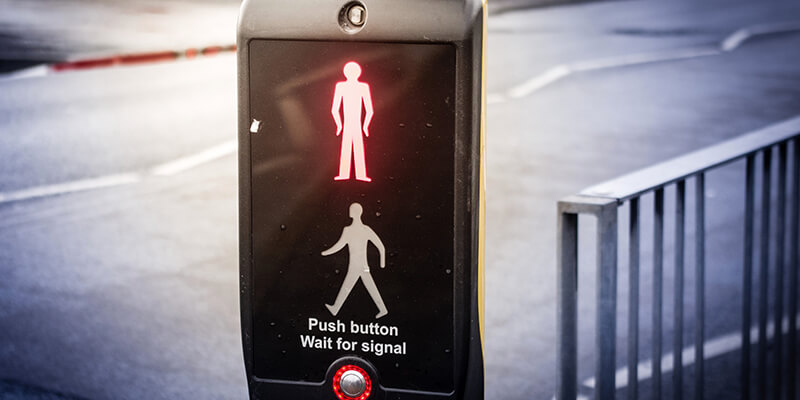The puffin crossing – which doesn’t quite stand for pedestrian user-friendly intelligent crossing – was first introduced in 1996 as a replacement for the pelican crossing. The main distinction is that the pedestrian signals showing the green person and red person are on the same side as the pedestrian and are usually mounted on the same pole as the push button. This means that pedestrians are looking directly towards approaching traffic before they cross, rather than across the road. Puffins also use sensors to detect when people are waiting to cross and if there is anyone on the road. This means that the light sequence is controlled based on how long it takes someone to cross the road, rather than a pre-set interval. Just like a pelican crossing, the standard width of a puffin crossing is 2.8 metres.

How do pedestrians cross at a puffin crossing?
Pedestrians should approach the puffin crossing, press the button and wait for the green person symbol to appear. While pedestrians will not be able to see the green person on the far side of the road, thanks to sensors, the traffic should not move until after everyone has completed the crossing. Pedestrians should only start to cross when a green person is showing.
How should drivers approach a puffin crossing?
Drivers should approach the lights with due care and attention and be aware that they may change from green to red, particularly if they can see someone waiting to cross. Thanks to the sensors, a puffin crossing does not have a flashing amber phase, instead red and amber are displayed, meaning get ready to go and drivers should only proceed once the lights have turned green and the crossing is clear.
